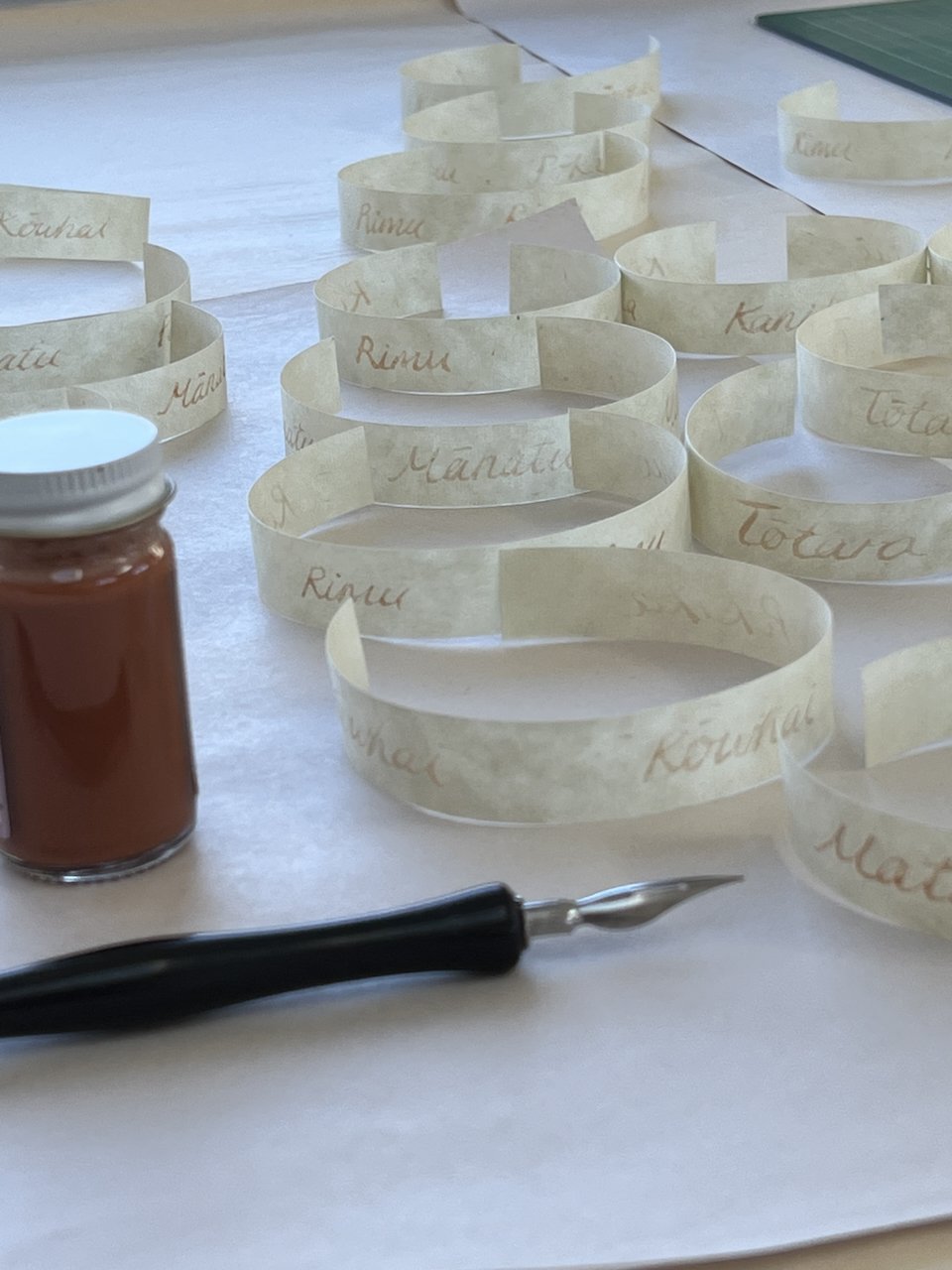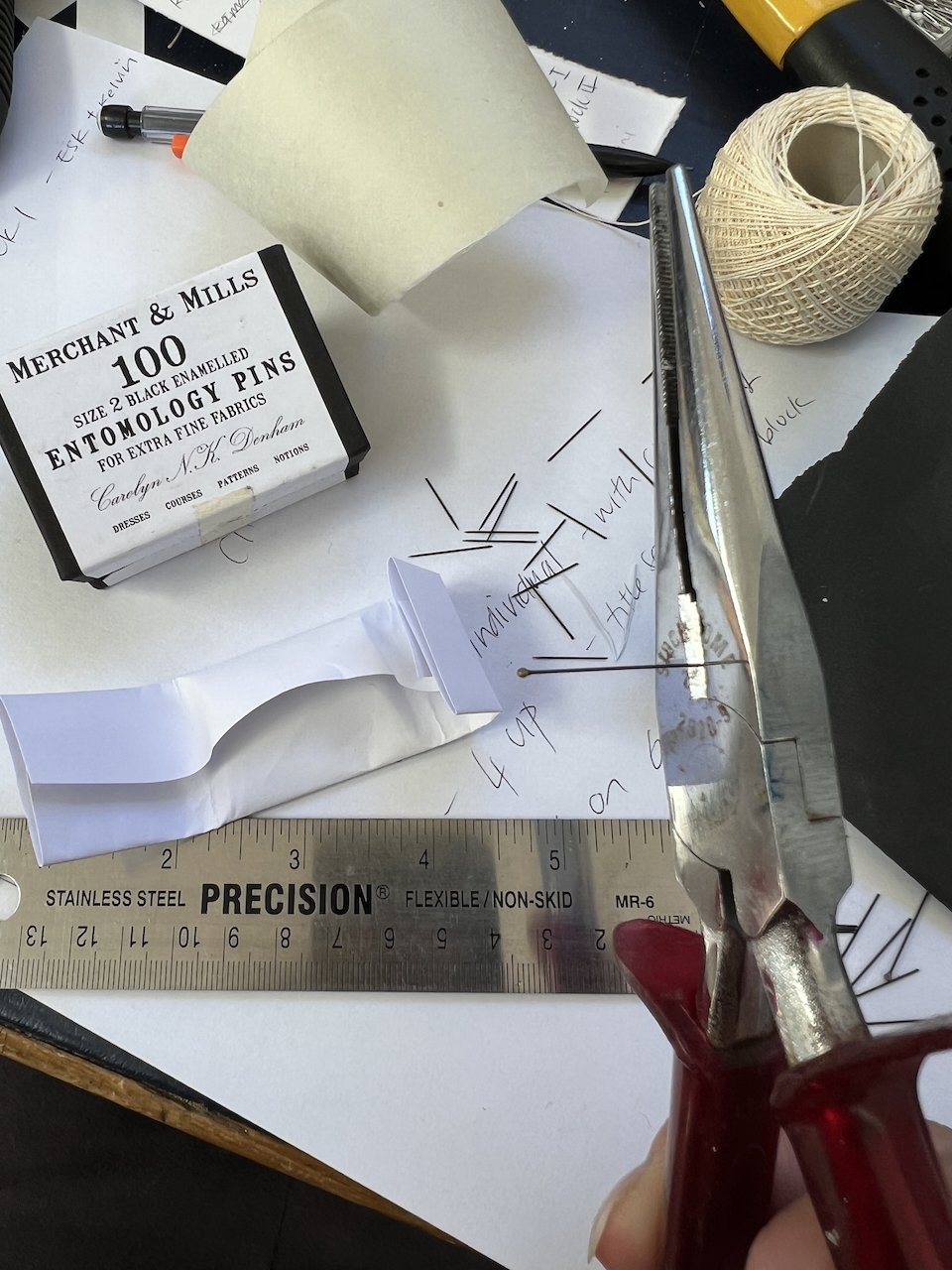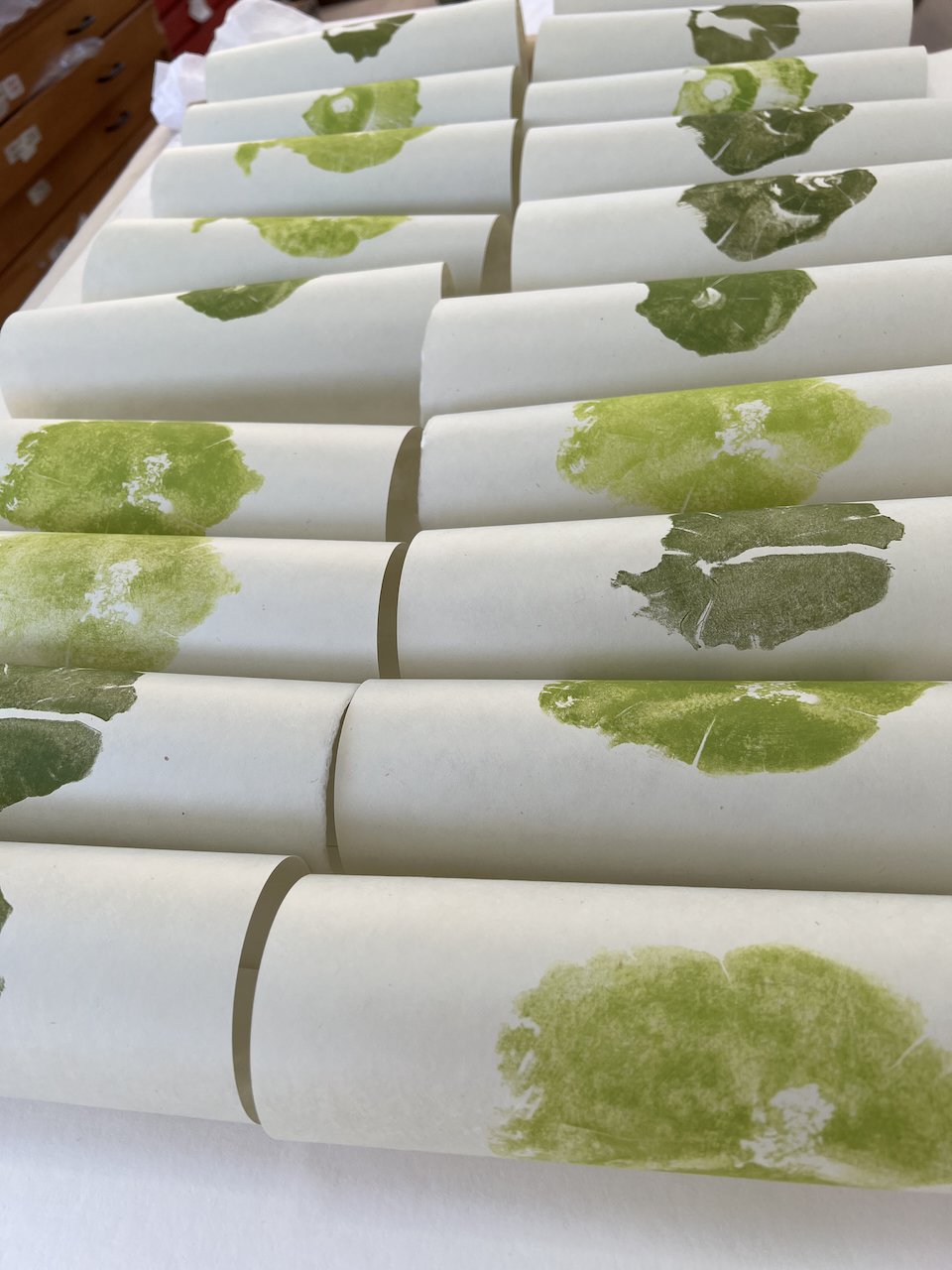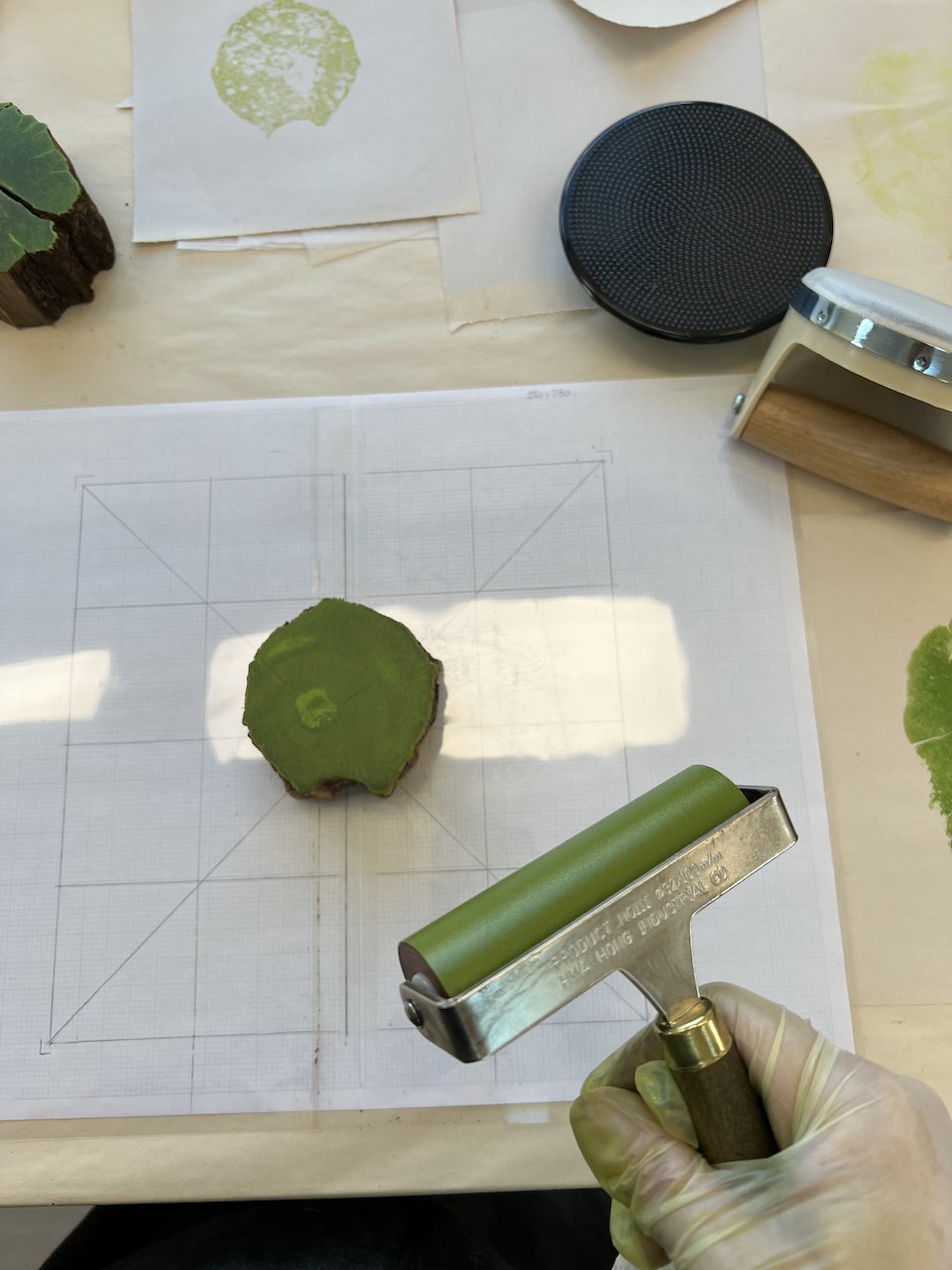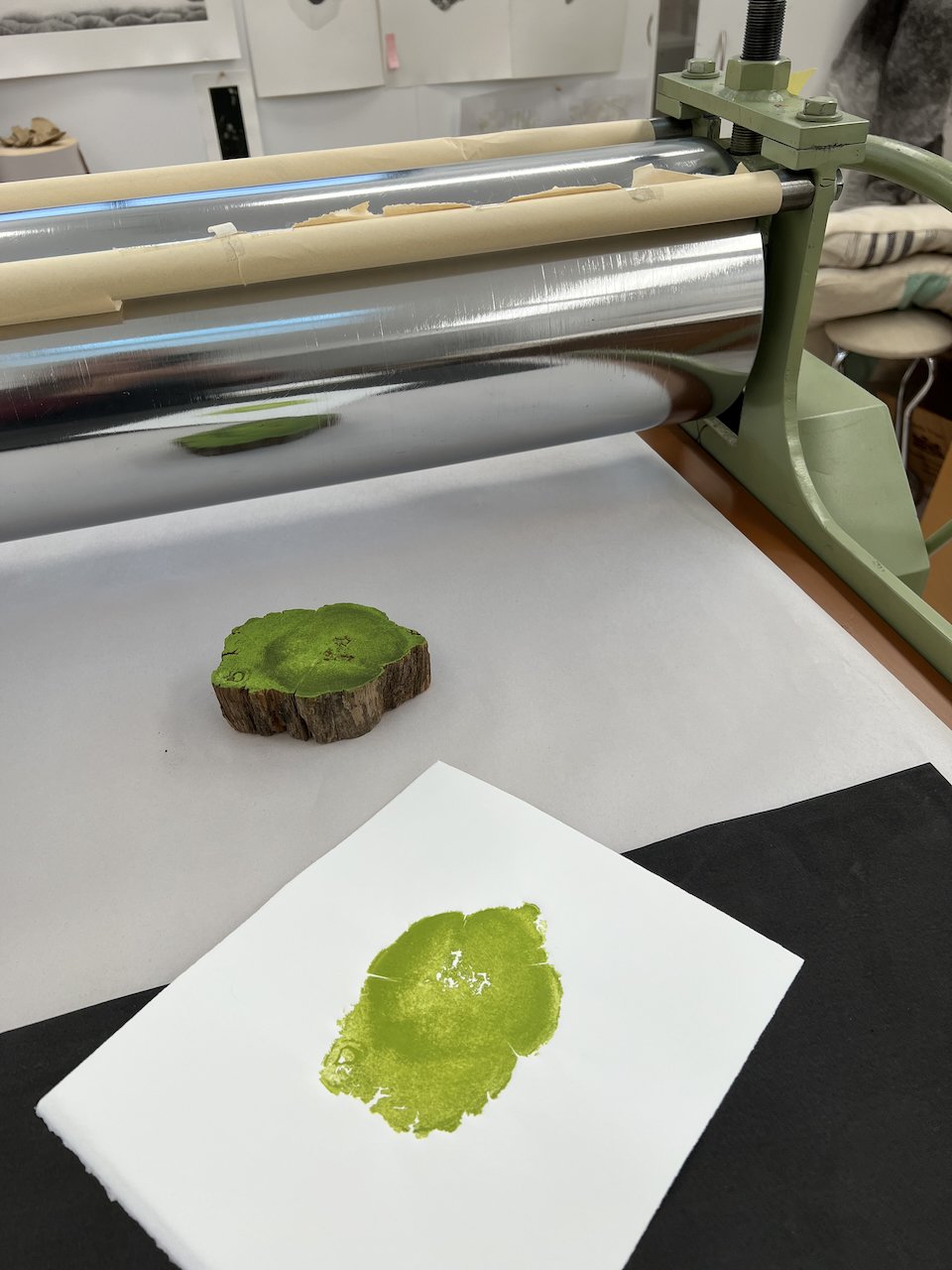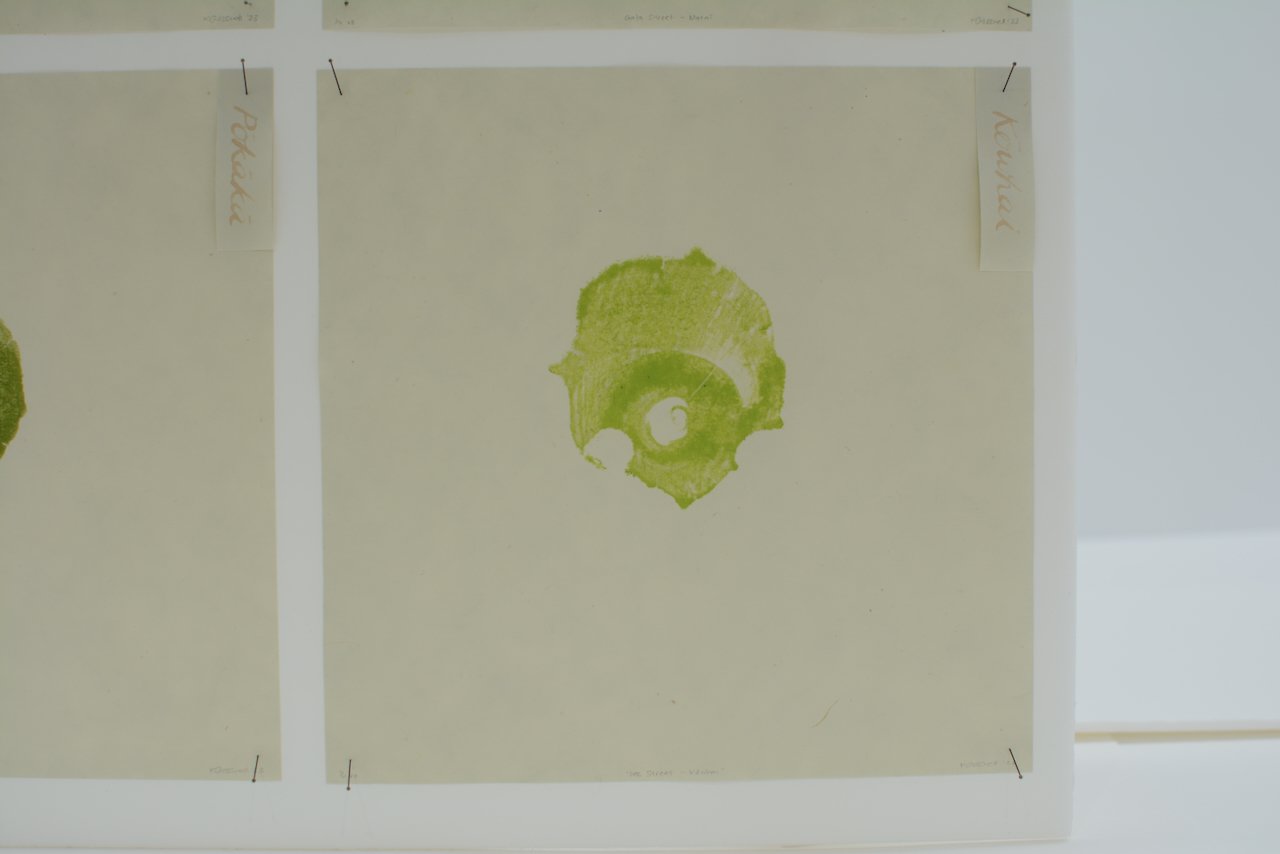I relished my days working with these bright greens using the timber slices from the old forest. I associate this variety of green with the bush in Southland, fresh new growth, kahikatea, mataī and pittosporum. These pieces of found fallen timber are from bush remnants on the outskirts of Invercargill. I love the colour of the wood, the weight of them. Unable to identify exactly which species they are, I have printed and named them to represent the trees that would have stood in the Taurakitewaru bush, or on the borders of the rivers and wetlands. They are printed on a very strong and thin kitakata green gampi paper. This is mounted with entomology pins in reference to the collection of specimens, the tradition of the preservation of the last of a species and the fragility and importance of the ecosystem they represent.
I printed so many of these to get them just right editing them down to small editions. First I tried printing by hand with a Japanese barren, then I tried thicker etching paper to see if the blocks would slightly emboss into the paper if printed on my etching press. They are signed as V.E meaning varied edition, as the organic nature of the blocks leads to some nice variation in the surface inking (I like to be really clear when there is any variation in a print beyond what is within the normal range of something hand printed). I like the cracks and growth rings, the texture of the bark edge, signs of life. The works are all labelled with a tag written in handmade Invercargill CBD demolition brick ink stating the name of the tree. The trees chosen represent plants that would have stood in that particular area pre-city development, for example ‘Esk Street - Kahikatea’ as this was the edge of the large mixed podocarp forest block, Taurakitewaru. Each printed slice is titled with the name of an Invercargill CBD street name. The works are framed mounted with entomology pins in reference to the preservation and recording of species and the importance and fragility of their existence.
Image from Retrolens SN880/Crown_880_B_23 showing the bush on the left. Decades ago it was cleared and the fallen timber is the source of these wood slices.
